| Columns Retired Columns & Blogs |
KEF Reference 201/2 loudspeaker Measurements
Sidebar 3: Measurements
The KEF Reference 201/2 is a little below average in sensitivity. My estimate of the speaker's voltage sensitivity on its tweeter axis was 85.5dB(B)/2.83V/m, slightly but inconsequentially less than the specified 86dB. Although its minimum impedance is a moderate 4.2 ohms, as specified, the electrical phase angle is occasionally high, which will make the speaker harder to drive than might be thought from a first glance at its impedance plot (fig.1). The combination of 5.5 ohms and –42° capacitive phase angle at 107Hz, a frequency where music can have high energy, mandates that an amplifier be used that is capable of driving low impedances without breaking a sweat.
The traces in fig.1 are smooth, lacking the small discontinuities that would hint at the existence of panel resonances of various kinds. Investigating the cabinet's vibrational behavior with an accelerometer revealed that the gracefully curved enclosure was commendably inert. The only resonant modes I could find lay at 400 and 670Hz, but were very low in level (fig.2).

Fig.1 KEF Reference 201/2, electrical impedance (solid) and phase (dashed). (2 ohms/vertical div.)
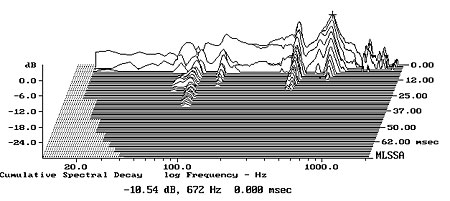
Fig.2 KEF Reference 201/2, cumulative spectral-decay plot calculated from the output of an accelerometer fastened to the center of the sidewall (MLS driving voltage to speaker, 7.55V; measurement bandwidth, 2kHz).
The saddle at 50Hz in the impedance-magnitude trace suggests that this is the tuning frequency of the top-firing port behind the coaxial driver's subenclosure, though the height of the lower-frequency impedance peak implies a rather overdamped alignment. This is confirmed by the nearfield responses of the port (fig.3, red trace) and woofer (blue). There is only a suggestion of the usual minimum-motion notch at 50Hz in the woofer's output, while the port's output is both slightly suppressed and covers a broader bandpass than usual. The woofer's response appears to hump up in the upper bass; this is mainly an artifact of the nearfield measurement technique. The crossover to the midrange unit (fig.2, green trace) looks asymmetrical, the woofer rolling off with a fairly gentle second-order slope, while the midrange comes in with a fourth-order slope. Both units are well behaved both in and out of their passbands. The upper-frequency crossover occurs at around 2.7kHz and appears to be symmetrical fourth-order. The tweeter is flat, other than a peak that starts just below the limit of the graph at 30kHz, this presumably due to the unit's primary dome resonance.

Fig.3 KEF Reference 201/2, acoustic crossover on tweeter axis at 50", corrected for microphone response, with the nearfield responses of the midrange unit (green), woofer (blue), and port (red), plotted in the ratios of the square roots of their radiating areas below 350Hz, 350Hz, and 1kHz, respectively.
Fig.4 shows how these individual drive-unit responses sum in the farfield, averaged across a 30° horizontal window centered on the tweeter axis. The bass rolls off a little earlier than the port tuning frequency of 50Hz might suggest, and there is a slight boost in the top octave. Otherwise, the KEF 201/2 offers an extraordinarily flat anechoic response, basically meeting tight ±1dB limits from the upper bass through the high treble. This response was taken with the gold-plated tuning caps set to Flat. Peculiarly, between the maximum and minimum settings I found only a 0.3dB difference at 10kHz.
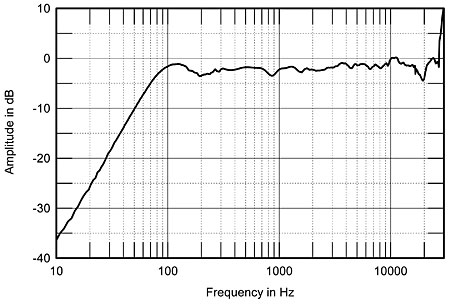
Fig.4 KEF Reference 201/2, anechoic response on tweeter axis at 50", averaged across 30° horizontal window and corrected for microphone response, with the complex sum of the nearfield responses plotted below 300Hz.
Not only was the KEF's on-axis response flat, its dispersion was textbook in the smoothness and evenness of the contour lines in its plot of horizontal radiation pattern (fig.5). This smoothness and evenness always correlates with stable, accurate stereo imaging, and while the tweeter gets more directional above 10kHz, as expected, there is only the slightest hint of an off-axis flare in the bottom octave of its passband and no off-axis irregularities. This generation of the KEF's Uni-Q drive-unit is very much better behaved off axis than its predecessors. The speaker demonstrates the same wide dispersion in the vertical plane (fig.6); as a result, it will not be fussy about the listener having to sit exactly on axis.

Fig.5 KEF Reference 201/2, lateral response family at 50", normalized to response on tweeter axis, from back to front: differences in response 90–5° off axis, reference response, differences in response 5–90° off axis.
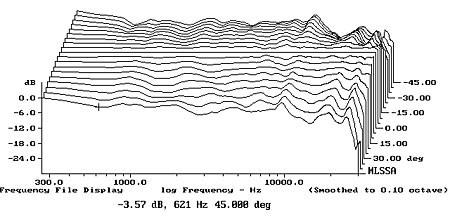
Fig.6 KEF Reference 201/2, vertical response family at 50", normalized to response on tweeter axis, from back to front: differences in response 45–5° above axis, reference response, differences in response 5–45° below axis.
Fig.7 is the KEF's spatially averaged response taken in WP's smaller listening room. (I took 40 responses for each speaker individually in a grid 36" wide by 18" high and centered on the position of WP's ears in his listening seat.) The speakers' bass was set for boundary loading with the appropriate screw cap removed, and the treble was set to its maximum, which is how the speakers were auditioned. The hump between 60 and 120Hz and the depression an octave higher are room-acoustics effects that have not been eliminated by the spatial averaging. The low bass rolls off prematurely, and there is a slight excess of midrange energy, but other than those features, the 201/2's in-room behavior is, again, extraordinarily flat. This is one neutrally balanced speaker.
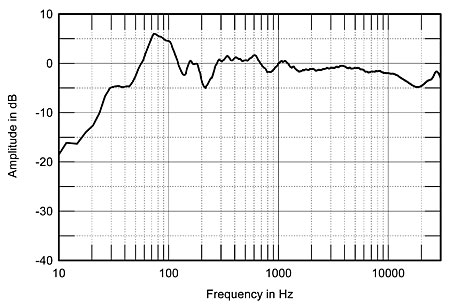
Fig.7 KEF Reference 201/2, spatially averaged, 1/6-octave response in WP's smaller listening room.
In the time domain, the KEF's step response on its tweeter axis (fig.8) reveals that both the tweeter and midrange units are connected in inverted acoustic polarity, the woofer in positive polarity. When this is combined with the phase shift due to the crossover filters, the result is a smooth, even summed output through each of the two crossover regions. You can also see that the step response of each driver smoothly blends into that of the next lower in frequency. The 201/2's cumulative spectral-decay plot on the tweeter axis (fig.9) is superbly clean and free from any resonant effects.
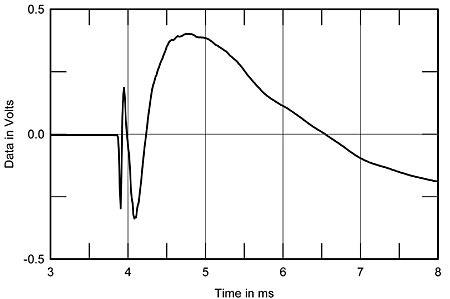
Fig.8 KEF Reference 201/2, step response on tweeter axis at 50" (5ms time window, 30kHz bandwidth).
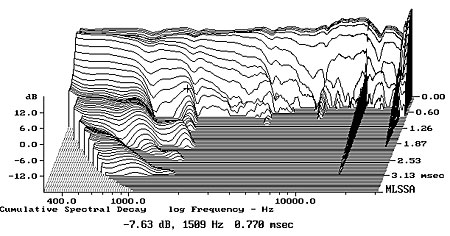
Fig.9 KEF Reference 201/2, cumulative spectral-decay plot on tweeter axis at 50" (0.15ms risetime).
The KEF Reference 201/2 is one of the best-measuring loudspeakers I have had the pleasure to test in my lab. As WP found, a pair of them will offer a superbly transparent, neutral, grain-free window on the recorded acoustic.—John Atkinson
- Log in or register to post comments




































